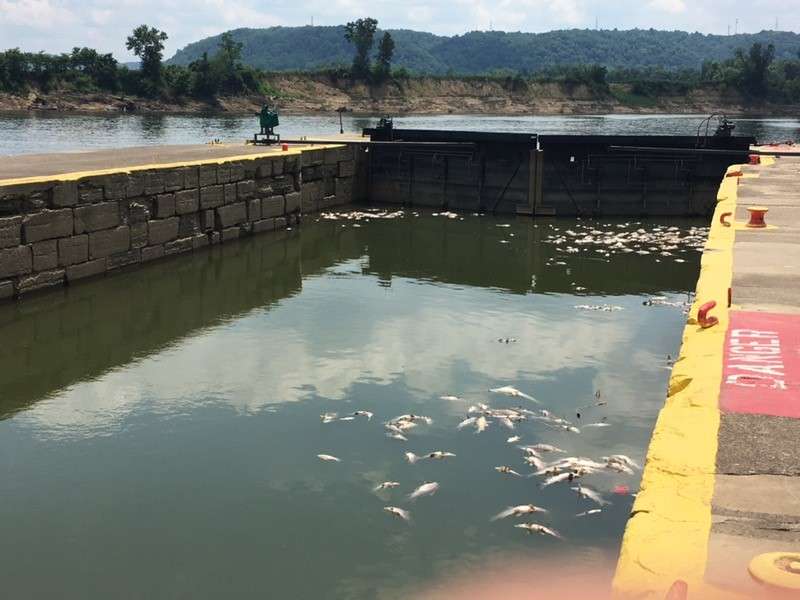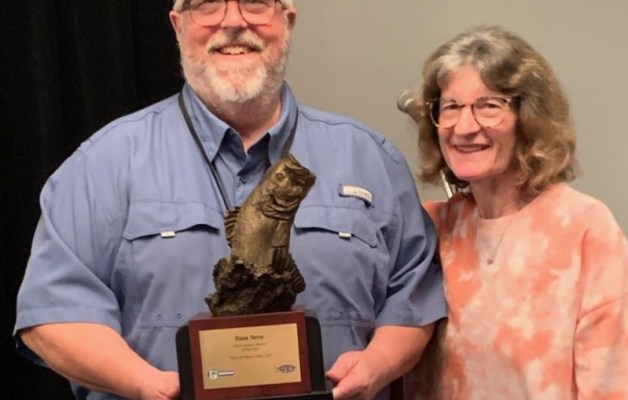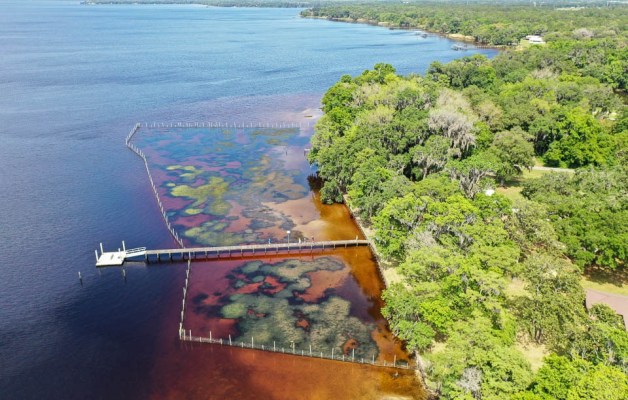
VERSAILLES, Ky. – This is now a tale of two fish kills: On July 2, a massive die-off commenced on the Kentucky River as a result of a bourbon spill from a Jim Beam warehouse. It followed hard on the heels of perhaps a more devastating kill June 6 in Alabama, as the result of a wastewater spill into the Mulberry Fork of the Black Warrior River by Tyson Foods.
And as assessment of the damage continues in Kentucky, with no body count yet reported, citizen anger in Alabama is on the rise, directed at both Tyson and Alabama state officials. By late June, citizens and organizations had filed more than 20 lawsuits against Tyson. One of the first was Sipsey Heritage Commission, a nonprofit “dedicated to promoting the unique history, culture and natural resources of Walker County.”
“Unless Tyson hurts financially, nothing changes,” said one angry citizen at a public meeting. And another added, “Right now, it’s cheaper for them to pay the fines than correct the problem.”
Keith Johnson from the Southern Environmental Law Center said, “We are at a tipping point. Our environment is one of the most important things to us.”
Black Warrior Riverkeeper Nelson Brooke pointed out that the same facility, under a previous owner, was fined $19,000 for killing 40,000 fish in 2016, an amount he termed “a slap on the wrist.” Altogether the plant has had four “accidents” impacting Mulberry Fork since 2011.
In the aftermath of this latest wastewater spill, low dissolved oxygen was recorded 22 miles downstream and dead fish as far as 40 miles. The official fatality total was 175,000, but the Alabama Department of Conservation and Natural Resources acknowledged that count was conservative and added that the event was so large that “direct counts of dead fish were not possible.”
Assistant Chief of Fisheries Damon Abernathy said, “It appears that most of the fish in the affected area were killed. Dissolved oxygen levels dropped to levels that most fish cannot easily survive.”
The impact was magnified by an unfortunate coincidence, as Birmingham Water Works was drawing water from its Smith Lake intake at the time of the spill, forcing Sipsey Fork to flow backward. As a consequence, as Mulberry Creek’s toxic water passed confluence with Sipsey, some of it was sucked upstream, killing fish there up for up to a mile.
Consequences have been magnified too, beyond waters directly impacted, simply because anglers and others are cancelling visits. At Riverside Fly Shop, upstream of the spill, owner Brandon Jackson said that customers cancelled more than 30 kayaking trips in late June.
In Kentucky, meanwhile, anglers and environmental officials are understandably unhappy about the Kentucky River fish kill, but seem to be accepting of it with less anger.
“We’ve had several (bourbon spills) in this state, so when this one occurred, we were just ready for it and knew what actions to take,” said Robert Francis, emergency response manager for the Kentucky Energy and Environment Cabinet (KEEC).
Almost immediately, crews were on the water. In addition to assessing damage, they used barges to aerate, in hopes of bringing oxygen levels back up to survivable levels for fish.
“The bacteria in the water is going after the food source, which is the sugar in the alcohol, and so they deplete the oxygen,” Francis added. “The fish start to become distressed, and they eventually die.”
Additionally, the alcohol plume that stretched for 24 miles at one point was expected to dilute significantly as the Kentucky River poured into the Ohio.
“But there could be some impact to aquatic life immediately where the rivers meet,” said KEEC’s John Mura.
Four days following the bourbon spill, the Kentucky Department of Fish and Wildlife Resources estimated that “thousands of fish” already had died, with more likely to succumb.
The spill occurred as the result of a fire at a warehouse housing 45,000 barrels of whiskey. That’s about 6.75 million bottles. The blaze was believed to have been started by a lightning strike. Officials decided to let the alcohol and ethanol “burn off” before trying to extinguish the blaze, and that resulted in bourbon flowing into the river.
In additional attempts to minimize loss of aquatic life, Beam Suntory, which owned the warehouse, placed aerators into both Glens Creek and Kentucky River. Also, crews used sand to prevent more runoff and trucked water collected at the burn site to a Frankfort sewer district plant for disposal.
Meanwhile, the Frankfort Plant Board, which treats Kentucky River water for human consumption, notified customers that they might detect a “sweet or bourbon odor” in the water, but assured them that the river could “still provide treatable water for drinking.”





